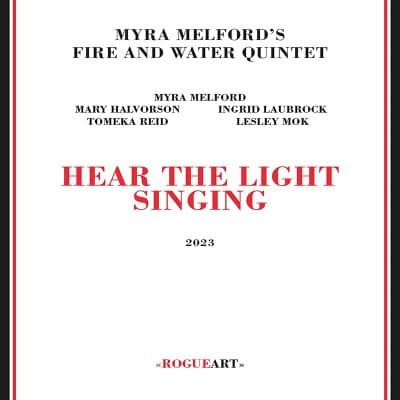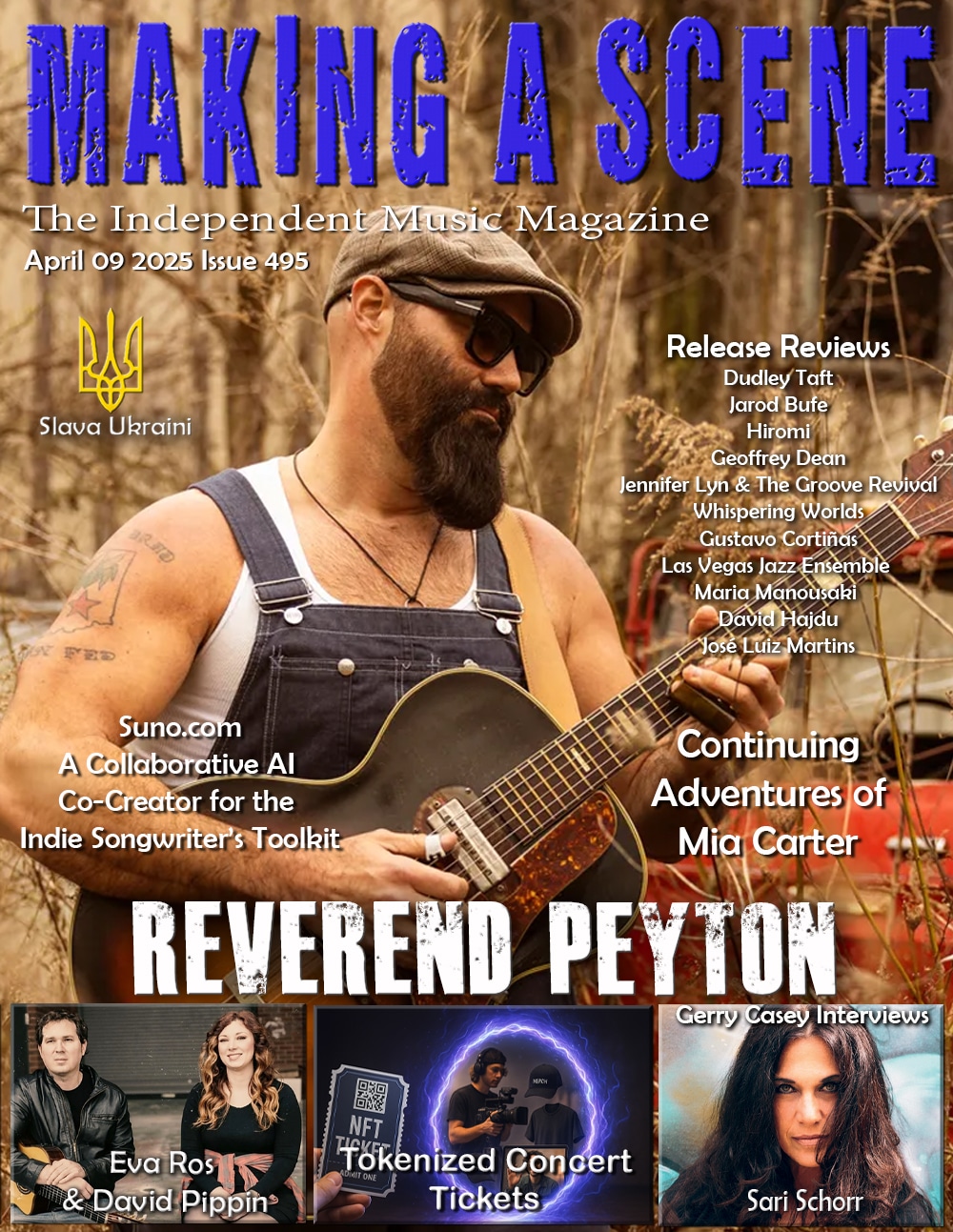Myra Melford’s Fire and Water Quintet Hear the Light Singing
 Myra Melford’s Fire and Water Quintet
Myra Melford’s Fire and Water Quintet
Hear the Light Singing
Rogue Art
Pianist and composer Myra Melford reunites a super group of all female improvising players with a different drummer to build the next chapter in her Fire and Water Quintet, building on 2022’s widely acclaimed For the Love of Fire and Water with five new compositions or what she terms ‘insertions’ that are meant to truly augment the original on Hear the Light Singing. See our review of the original on these pages for more context. Just as the first installment of this multi-part project was inspired by modern artist Cy Twombly, this is named specifically for Melford’s interpretation of the sunlight on the Mediterranean in Gaeta, Italy where Twombly made her drawings and the accordant synesthetic sensation.
Melford wrote this music specifically for the players with whom she toured the original album – Mary Halvorson on guitar, Ingrid Laubrock on soprano and tenor saxophone, Tomeka Reid on cello, and now Leslie Mok on drums and percussion. Melford comments, “The first [album] was what I imagined might be fun to do with them the second set of material was really written to highlight who they are and how we play together in a much more intentional way than I was able to do before I got to know them.” This group – each an accomplished composer and bandleader in her own right — first convened as part of Melford’s June 2019 residency at The Stone, the famed NYC avant-garde venue and has been playing as a unit since. Each of these five pieces features each member of the ensemble playing unaccompanied. Don’t go crazy trying to match up the insertions with the original pieces, they can be listened to in any order and were meant to also stand alone if need be. At some point there may be a live album with a certain sequence, but these are meant, as she explained, to depict the improvisational talents of these players.
On “Insertion One’ following her robust piano intro Melford first develops a feisty conversation with Laubrock on soprano who then intertwines with Halvorson before returning to a brighter dialogue in floated and flurried lines with Melford, later joined by the full ensemble. The latter third of the piece features Halvorson in her uniquely inventive guitar stylings set against a frenetic rhythm section. “Insertion Two,” the shortest of the five at just under seven minutes, begins with Reid’s classical but edgy cello intro that evolves into a dramatic piece that bursts into new colors as Halvorson and Laubrock enter.
“Insertion Three A + B” is practically three times as long at over 18 minutes and begins with rattling ‘noise’ from Halvorson, Reid, and a percussive maelstrom from the bass-drum tandem before Melford settles it down just a bit. A jagged sequence led by Laubrock’s tenor and intricate percussive responses ensues and the band proceeds to be the best version of its most wild selves. Please go ahead and form your own visual impressions but this writer’s hearing everything from dripping water to cascading waterfalls to calmer seas as well as undulating and more ferocious, threatening waves. This is akin to the predecessor, which was built a series of contrasts, polarities intersecting as if to reflect the force and unpredictability of nature. At around the twelve-minute mark, all step aside for Mok’s two and half minute excursion, hitting every part of the kit and weaving zephyrs of sound with her cymbals. The quintet returns firing but quicky cedes again to the drummer who emphatically applies sizzling rolls to her snares in a vigorous exchange with Halvorson.
The guitarist commences “Insertion Four.” This relatively short piece highlights the mastery of Halvorson, who is regarded in many quarters as today’s most inventive guitarist. She won a MacArthur “genius” grant for her work in 2019, and in citing her work, the MacArthur Foundation wrote that “Halvorson’s guitar playing is distinguished by her percussive picking style and the distinctive clarity of tone she produces on her vintage Guild hollow-body guitar, which she amplifies with subtle, pitch-bending electronic interventions. She is equally adept at picking out delicate and nuanced melodic lines and producing a spray of atmospheric noise.” Here, it is her nuanced melodic lines, especially as they blend with Reid’s cello that are featured whereas plenty of those ‘pitch-bending electronic interventions’ were at play in the prior piece.
The quintet engages in an alternately quiet and more aggressive call-and-response as if each instrument not only answers but further builds out the other’s shortly expressed bursts. In the latter section a groove develops, propelled by Mok and Melford and the ensemble revels in this joyous bounce, which seemingly could extend much further, only to come to an abrupt halt.
Dive in, you don’t have to be familiar with Twombly’s art or the initial project it to appreciate it: you can certainly enjoy this on its own merits.
- Jim Hynes
Buy Us a Cup of Coffee!
Join the movement in supporting Making a Scene, the premier independent resource for both emerging musicians and the dedicated fans who champion them.
We showcase this vibrant community that celebrates the raw talent and creative spirit driving the music industry forward. From insightful articles and in-depth interviews to exclusive content and insider tips, Making a Scene empowers artists to thrive and fans to discover their next favorite sound.
Together, let’s amplify the voices of independent musicians and forge unforgettable connections through the power of music
Make a one-time donation
Make a monthly donation
Make a yearly donation
Buy us a cup of Coffee!
Or enter a custom amount
Your contribution is appreciated.
Your contribution is appreciated.
Your contribution is appreciated.
DonateDonate monthlyDonate yearlyYou can donate directly through Paypal!
Subscribe to Our Newsletter
Discover more from Making A Scene!
Subscribe to get the latest posts sent to your email.














































